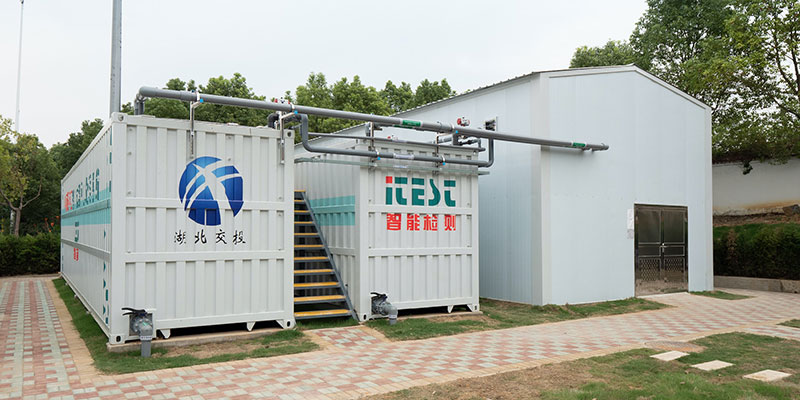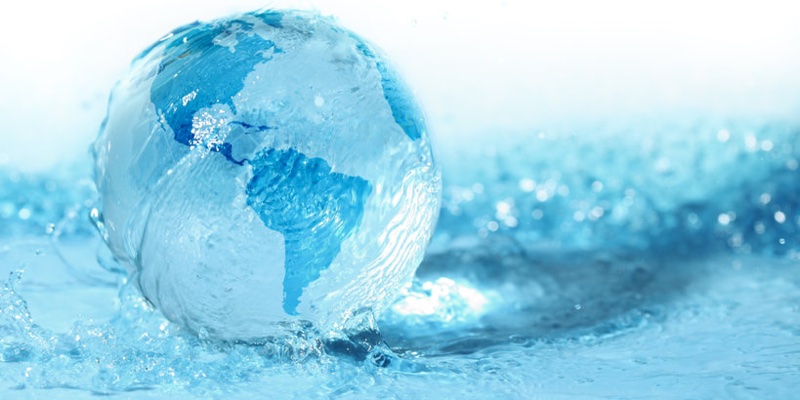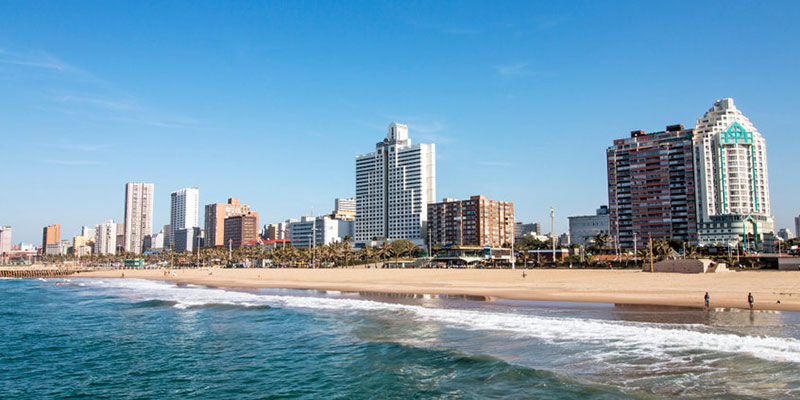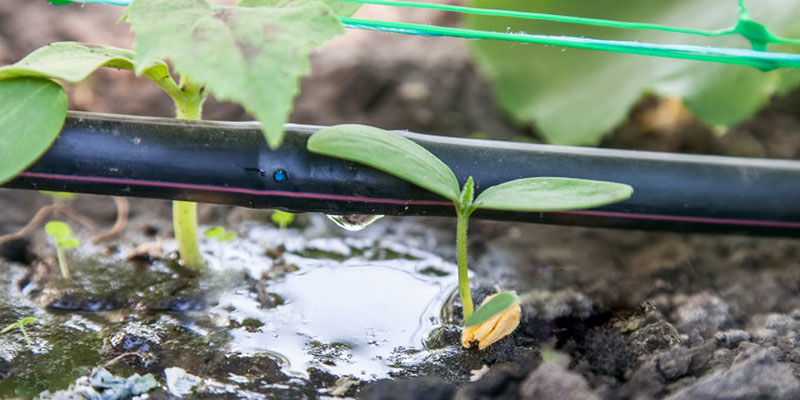As the world struggles with water scarcity, wastewater reuse can provide safe effluent for potable and nonpotable applications.
From agricultural reuse in Israel to Los Angeles’ direct potable reuse scheme, water reuse is expanding thanks to necessity and new attitudes
Around the world, the effects of climate change are being felt, including from drought and increased evaporation from higher temperatures, which can extend the intensity and duration of drought. Meanwhile, population growth is simultaneously growing demand for water. As a result, there is more attention on water reuse as a way to use precious water resources more wisely.
While technical obstacles to water reuse have been overcome, in some parts of the world, psychological barriers persist. But, as more people become concerned about running out of water, they are also becoming more open to recycling wastewater. In many regions, governments, water managers, regulators, and the public are moving forward together with reuse projects on every scale.
Large-Scale Water Reuse Programs
On the national scale, Israel continues to lead in the percentage of its wastewater that it reuses. The country recycles almost 90% of its wastewater (37 billion GPY) with 67 large wastewater treatment facilities. Most of it undergoes tertiary treatment and is used for agricultural irrigation.
On the municipal level, India’s New Delhi now recycles 500 million GPD of treated wastewater for horticulture, aquifer recharge through groundwater percolation areas, and municipal maintenance such as washing public transport vehicles.
In Australia, Perth’s Beenyup Advanced Water Recycling Plant has been recharging the city’s groundwater since 2017 and was recently expanded to a capacity of approximately 76 million GPD.
In the United States, what was once the world’s largest indirect potable reuse program, Orange County’s Groundwater Replenishment System (GWRS), uses microfiltration, reverse osmosis, and disinfection stages to produce approximately 8 million GPD.
To respond to the extreme drought in the American West, members of the U.S. House of Representatives have introduced a bill that would fund $750 million in water recycling projects in 17 Western states through 2027.
Decentralized Water Reuse Now a Practical Reality

MABR technology features same-tank nitrification-denitrification for high nutrient removal that meets China’s Class 1A standard for water reuse.
One of the most promising reuse concepts in water management is decentralized treatment. The idea — placing small-scale treatment plants at the source of need — is not new, but only recently has technology made it a practical reality.
China now leads the world in decentralized reuse, with applications including an 80-plant decentralized wastewater treatment system The system’s wastewater treatment plants, spaced at 50 km intervals, use Fluence’s Aspiral™ modular units which are controlled remotely from a central location.
The key to Aspiral™’s water reuse capability is membrane aerated biofilm reactor (MABR) technology, which features same-tank nitrification-denitrification for high nutrient removal that meets China’s Class 1A standard for reuse as well as California’s Title 22 standards. MABR also uses passive aeration, which slashes energy use. And, Fluence manufactures the units in standard shipping containers for quick deployment.
Direct Potable Reuse Is Gaining Acceptance
In Durban, South Africa, Fluence’s Aspiral™ wastewater treatment solution will ultimately provide safe drinking water to the surrounding community.
Direct potable reuse (DPR), or use of treated wastewater for drinking, has long faced high psychological barriers, particularly in the United States. But some DPR programs are fully embraced by the public once operational.
The Goreangab Water Reclamation Plant in Windhoek, Namibia, started operating in 1968 and the expanded project is now the oldest DPR plant in the world. It still intensively treats wastewater to produce 35% of the drinking water for the city’s 325,000 residents. To the south and east, South Africa also has DPR projects at Beaufort West and eMalahleni.
Here at Fluence, we are currently working on a DPR project to provide people in eThekwini, South Africa, with potable water.
Singapore’s 20 million GPD NEWater program not only provides reused water to semiconductor manufacturers and other industries, but it also provides approximately 1% of the city-state’s drinking water.
In the Southwestern U.S., the public has accepted DPR projects in Big Springs, Wichita Falls, Brownwood, and El Paso, Texas, as well as Cloudcroft, New Mexico.
The most ambitious DPR program planned to date, Los Angeles’ Operation NEXT, is working toward providing 70% of drinking water for Los Angeles with DPR by 2035.
Setting Standards for Water Reuse
Agriculture represents 70% of global water demand, but only 2-7% of irrigated land makes use of reused water, so new opportunities are plentiful. Water reuse programs that achieve sustained community support often are marked by high public trust in the utility, extensive testing, superior water quality, and a willingness to work with regulatory agencies from the beginning. By setting standards, we can ensure that the wastewater is safe for reuse.
Several regulatory frameworks have led the way. In the industrial sector, treatment for reuse is often done on-site, with standards determined in-house minding required parameters for the target application. Recently, many states in India have developed water reuse policies that require industries to use reused municipal wastewater for operations, with special pricing as an incentive for adoption.
Water reuse standards have been issued by a variety of countries including Canada, Australia, Mexico, Iran, Egypt, Tunisia, Jordan, Palestine, Oman, China, Kuwait, Israel, Saudi Arabia, France, Cyprus, Spain, Greece, Portugal, and Italy. Many jurisdictions, such as Canada, Australia, China, and many U.S. states, have high water reuse standards.
In the U.S. there is no federal guidance on agricultural water reuse. Instead, water reuse standards are established state-by-state. Notably, California has raised the bar for water reuse regulation with its stringent Title 22 standards for reuse applications. The framework enumerates rules and standards that cover 40 specific applications for disinfected tertiary recycled water.
In 2020, to support water reuse within the context of the broader Circular Economy Action Plan, the European Union (EU) Parliament and EU Council established new minimum requirements for urban wastewater reuse in agricultural irrigation. The framework establishes minimum monitoring frequency, validation monitoring requirements for each quality parameter, risk management provisions, permitting requirements, and public transparency requirements. The EU has also committed to promoting water reuse in other sectors.
China also leads in water reuse regulation with a four-tier framework focused on its Class 1A and Class 1B standards, which reached 90% compliance throughout China by 2018. Class 1A wastewater effluent, the framework’s highest tier, can be reused or discharged to recreational or scenic water bodies with smaller diluting capacities. While most Chinese wastewater treatment plants were designed for the lower Class 1B standard, rising quality standards now mandate that discharges in 40% of China must meet the Class 1A standard. 2016’s Five-Year Plan, with its focus on green growth, has gone a long way toward encouraging compliance.
Water Reuse Rising Around the World
Since Christopher Gasson, publisher of Global Water Intelligence, predicted a “golden decade” of water reuse in 2016, growing water scarcity, population growth, and hotter temperatures have together motivated a growing global acceptance of water reuse. Governments, regulatory bodies, water management, and the public are coming to an understanding that it no longer makes sense to use water only once when it can be reused in so many applications.
Contact Fluence to explore our solutions that turn wastewater into water that is safe for agricultural or landscape irrigation, purple-pipe applications like washing and dust reduction, and even drinking.



